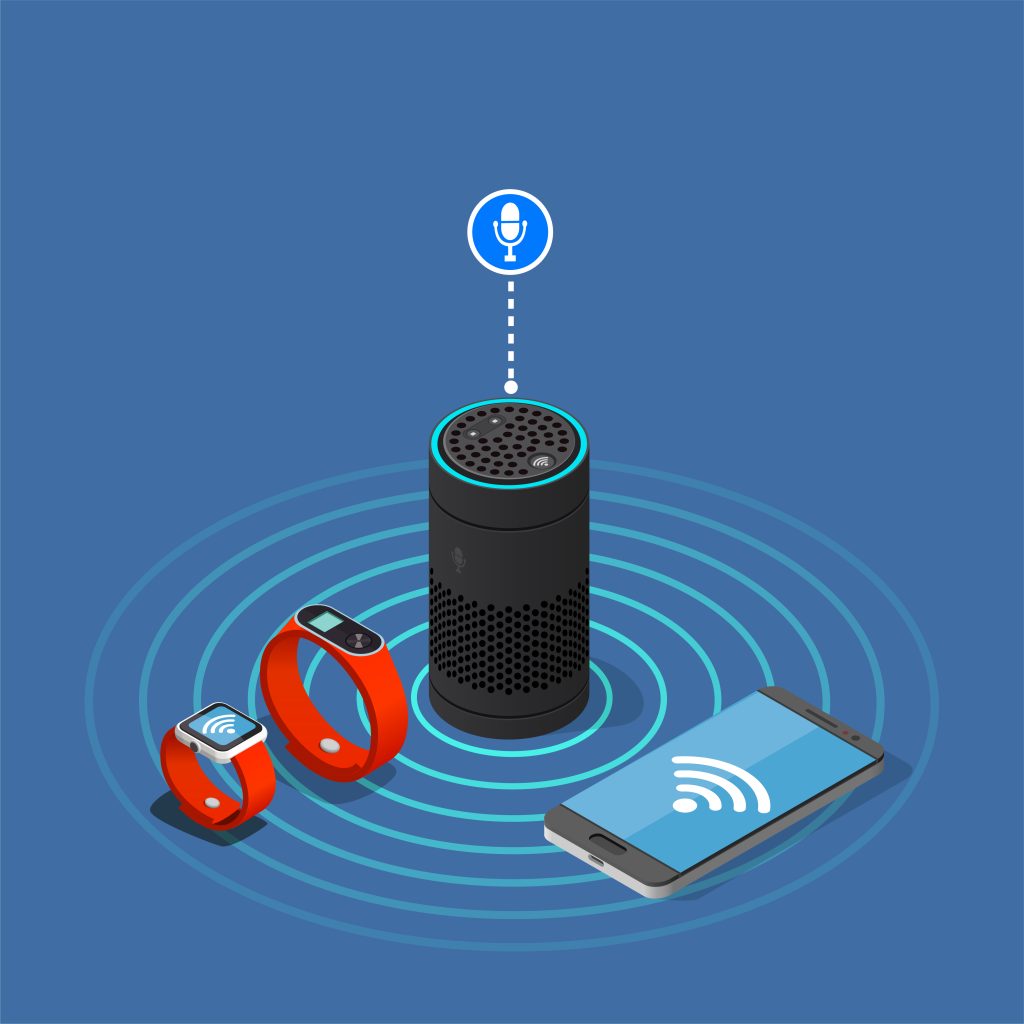Voice Quality Enhancement

Perfecting Voice Quality Enhancement: Secrets to Clear Calls
Voice Quality Enhancement (VQE) is a suite of advanced audio processing technologies designed to improve the clarity, intelligibility, and overall quality of voice signals in real-time voice communication systems. By integrating algorithms like Acoustic Echo Cancellation (AEC), Noise Suppression (NS), Wind Noise Suppression (WNS), Dynamic Range Compression (DRC), Automatic Gain Control (AGC), Speech Ineligibility (SI), Equalization (EQ), Howling Control (HC), Microphone array Beamforming (BF) and audio post-processing, voice quality enhancement software delivers superior voice quality, reduces background noise, and eliminates distortions, ensuring seamless communication experiences.
A brief description of VQE functional components follows.
1. Echo Cancellation and Reverberation Control
Acoustic Echo Cancellation (AEC): Minimizes echoes caused by audio feedback in full-duplex communication, ensures natural, echo-free conversations even in noisy environments.
Reverberation control: Reduces the effects of room reflections, particularly in indoor environments.
Ideal for voice calls, video conferencing, and voice-enabled devices.
2. Noise Suppression (NS):
Adaptive Noise Cancellation (ANC): Suppresses background noises (e.g., traffic, crowd, car, and street noise) while preserving speech clarity.
Acoustic Beam forming: Uses multiple microphones to focus on the speaker’s voice while rejecting noise from other directions.
ML-Based Noise reduction: Uses machine learning techniques to distinguish and suppress unwanted sounds in real time.
Enhances speech intelligibility by isolating the speaker’s voice.
3. Dynamic Range Compression (DRC):
Dynamic Range Compression (DRC) is designed to manage the volume of sound by adjusting the levels of both quiet and loud segments. In voice communication, DRC ensures that every word is audible, regardless of the speaker’s voice volume. It reduces the loud sounds to avoid distortion and amplifies softer ones to ensure clarity. By applying consistent volume control, DRC enhances the listening experience, making voice interactions smoother and more enjoyable.
Balances audio levels by compressing the dynamic range of the signal.
Prevents distortion and ensures consistent volume for both soft and loud sounds.
Enhances listening comfort and reduces the need for manual volume adjustments.
4. Automatic Gain Control (AGC):
Automatic Gain Control (AGC) adjusts the microphone’s input levels or the speaker’s output in real time to maintain consistent audio levels throughout a conversation. It ensures that the audio volume stays within an optimal range, regardless of fluctuations in the speaker’s voice intensity. AGC eliminates issues such as distorted audio caused by abrupt volume changes or inaudible speech, providing clear, balanced communication for both sides of the conversation.
Automatically adjusts microphone gain to maintain consistent audio levels.
Prevents distortion and ensures clear audio even when the speaker moves closer or far from the microphone.
Enhances listening comfort and reduces the need for manual volume adjustments.
5. Equalization (EQ):
Equalization (EQ) is the process of fine-tuning the frequency response of the audio signal to enhance the clarity and naturalness of the voice. With EQ, specific frequencies associated with human speech (such as mid-range tones) are amplified, while irrelevant sounds in lower or higher frequency ranges are reduced. EQ plays a critical role in voice communication systems, helping to make the voice clearer and more distinct. It is especially useful in challenging environments where the audio may otherwise sound muffled or distorted.
Fine-tunes audio frequencies to enhance voice clarity and reduce unwanted resonances.
Customizable EQ profiles for different use cases, such as voice calls, music, or broadcasting.
Delivers balanced and natural sound quality.
6. Howling Control (HC):
Prevents audio feedback and howling caused by microphone-speaker loops.
Ensures stable and distortion-free audio in conference rooms, live events, and public address systems.
7. Microphone Array Beam forming (BF):
Adaptive Beamforming is a spatial filter which focuses on the speaker’s voice while suppressing noise from other directions. Beam forming is ideal for smart speakers, conference phones, and voice-controlled devices.
8. Wind Noise Suppression (WNS)
This function detects wind noise interference in devices such as heartless, smartphones, etc., and filters it out to provide a clean speech output for the listener.
9. Speech Intelligibility Improvement (SII)
While noise suppression function can improve speech quality, it may adversely affect speech intelligibility. The SII can help in improving intelligibility.
Why Voice Quality Enhancement Technologies Are Essential?
Integrating all these components—AEC, NS, DRC, AGC, EQ, HC, SII—Voice Quality Enhancement technologies create an environment where voice clarity, intelligibility, and quality are enhanced in any communication scenario. These technologies are vital for industries like customer support, broadcasting, telecommunication, virtual meetings, and any platform that relies on clear, uninterrupted voice interactions, and wearable and hearable devices, such as smartwatches, true wireless earbuds, and bone-conduction headsets. Voice Quality Enhancement software technologies improve the listener’s experience by ensuring clear, professional-quality voice output without distractions or distortions.
Applications of Voice Quality Enhancement
Telecommunications – Enhances voice quality in mobile networks, VoIP systems, and landline telephony.
Video Conferencing – Delivers clear and natural-sounding audio for remote meetings and virtual collaboration.
Voice-Enabled Devices – Improves the performance of smart speakers, voice assistants, and IoT devices with voice interfaces.
Automotive Systems – Ensures high-quality voice communication in-car hands-free systems and in-vehicle infotainment.
Professional Audio Equipment – Enhances the quality of microphones, headsets, and recording devices for broadcast, podcasting, and live performances.
Voice Assistants – Enhance voice recognition accuracy in smart devices.
Automotive – Provide clear hands-free calling and voice commands in vehicles.
Smart Home Devices – Enable seamless voice control in noisy environments.
Benefits of Voice Quality Enhancement
Improved User Experience – Clear audio enhances engagement and satisfaction.
Increased Productivity – Reduces miscommunication and fatigue during long calls.
Competitive Advantage – Stand out with superior audio quality in your products.
Versatility – Suitable for a wide range of applications, from consumer devices to enterprise solutions.
Crystal-Clear Audio – Delivers natural and intelligible voice quality, even in challenging acoustic environments.
Noise-Free Communication – Effectively suppresses background noise and echo for uninterrupted conversations.
Consistent Volume Levels – Maintains balanced audio levels with AGC and DRC, preventing sudden volume changes.
Customizable Solutions – VQE can be tailored to meet the specific needs of different applications and industries.
Future-Proof Technology – Adapts to evolving audio standards and emerging communication technologies.
Experience crystal-clear, professional-quality voice communication with our advanced Voice quality enhancement software solutions. Whether for business or personal use, our cutting-edge AEC, BF, NS/NR, DRC, AGC, EQ, HC, and post-processing technologies are designed to elevate your audio experience. Contact us today to learn more about how our Voice quality enhancement solutions can improve your communication systems and provide your users with exceptional sound quality.
GET IN TOUCH

